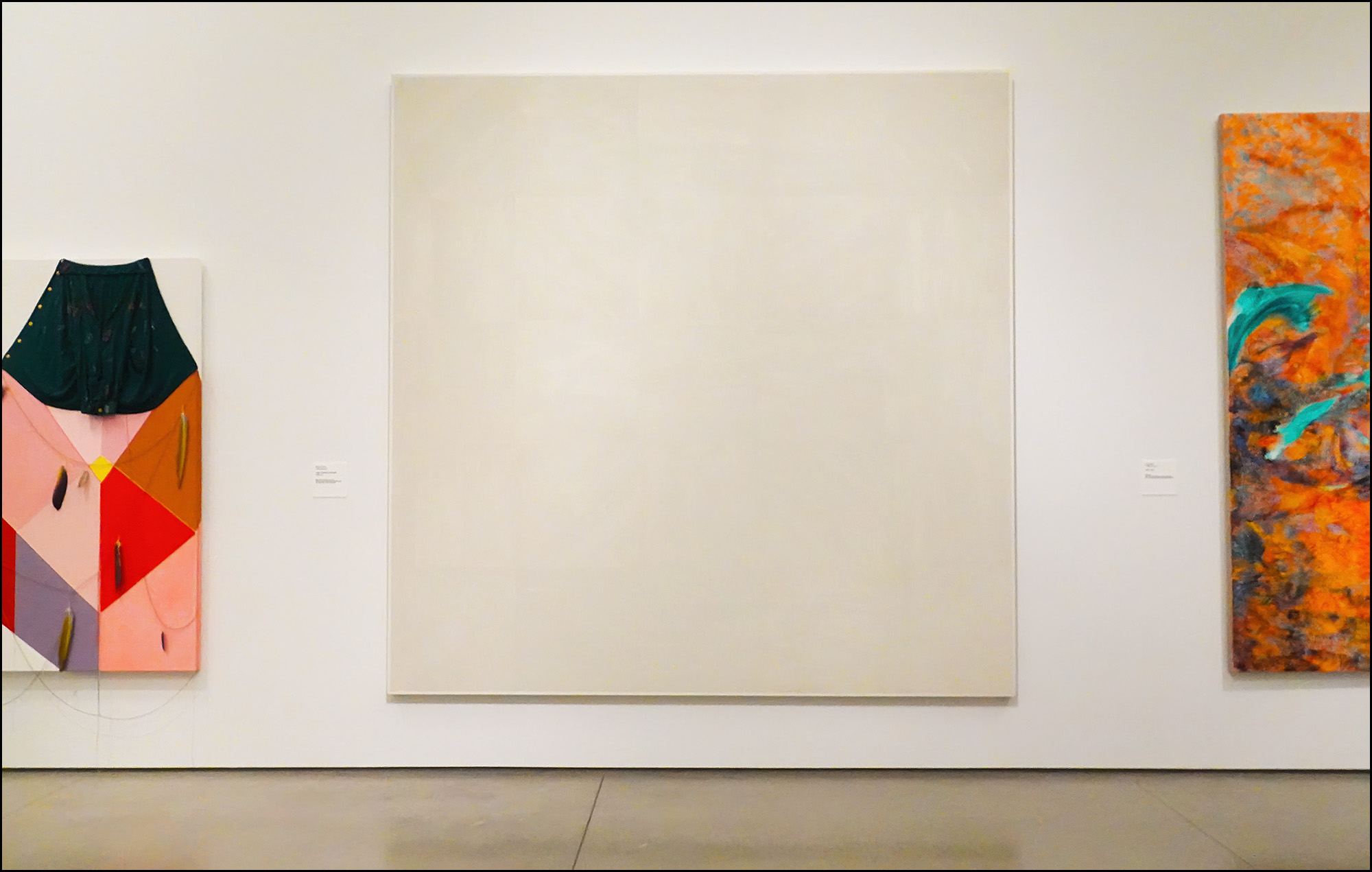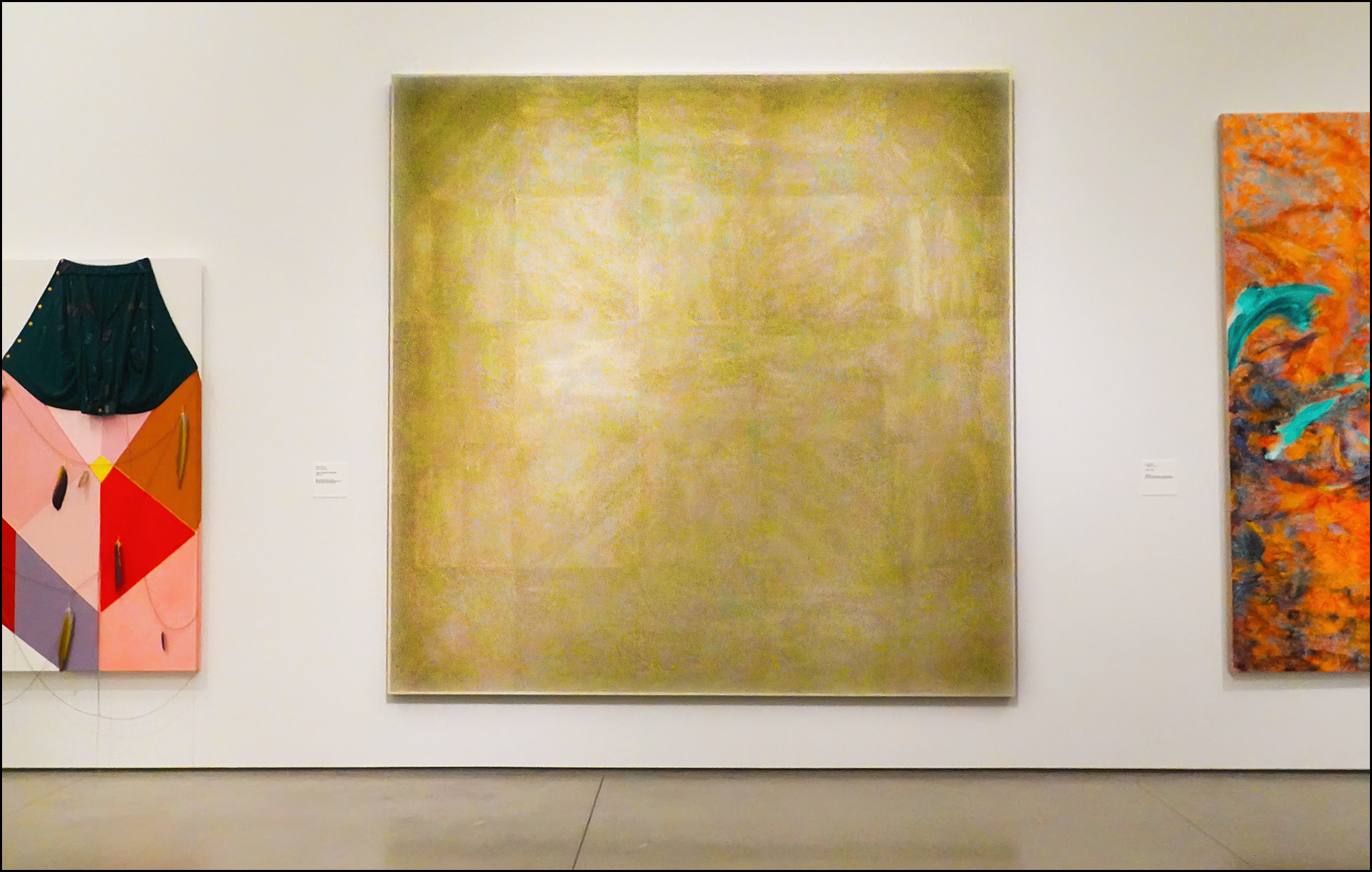Here's an interesting comparison of an artwork with itself in the Orange County Museum of Art. This is a normal exposure that shows what the piece looks like to the naked eye, and I initially took it only to make fun of it. A blank white canvas? Please. It's been done.
 But then I noticed something that prompted me to re-edit the photo. I selected just the canvas itself and then performed a massive Photoshop exposure correction on it:
But then I noticed something that prompted me to re-edit the photo. I selected just the canvas itself and then performed a massive Photoshop exposure correction on it:

It's not a blank white canvas. It's formed of glass beads on acrylic, and under the right light you can see the pattern imprinted on it by artist Mary Corse.
You may or may not think much of this pattern. That's up to you. But why would the museum light it in such a way that you can't even see it?

Indeed, I've walked back and forth to a different Mary Corse "light painting grid" -- https://bityl.co/Fx9R -- and was intrigued by the subtleness of the changing light reflection.
Very cool! I'll have to check that out next time I'm in Portland.
At my workplace there is a piece of textile art depicting Albert Einstein. The trick is that you can only see Einstein if you view the piece at an angle, standing off to the side; if you view it head-on you only see gray and black stripes, because Einstein's face is delineated by the angle of the fabric bristles.
The classic depiction of a polar bear in a snowstorm. Done by many art students in various styles throughout the centuries.
I'm thinking you had to be there.
If I squint I think I can see the Shroud of Turin and The Madonna
An example of what I call Ego Art or some would say "Sh*t Art".
Some of us are built with the capacity to see the tiny details that others easily miss, in large part because we are more curious than others, willing to explore beyond what one just simply sees in passing.
There's this other piece at PAM by Marc Quinn, "Holy Ghost". On one floor it's a green ceramic sculpture that resembles a flower. On the next floor up, it's an aluminum copy of the same. Nothing interesting about it, until you take a photograph of the aluminum one. It shows up with a greenish tint that makes it resemble the green ceramic one viewed with your naked eye.
I think it's exciting to discover the subtle differentiation of an abstraction of a white square. Or, realizing that you have to stand at a certain spot at a certain time on a certain day at Stonehenge to have things aligned for a twice-a-year event that would otherwise go unnoticed.
My cousin could truly receive money in their spare time on their laptop. their best friend had been doing this 4 only about 12 months and by now cleared the debt. in their mini mansion and bought a great Car.
That is what we do.. https://earningblue.blogspot.com/
It's worth repeating that photos butcher art works. If you haven't seen it in person, you haven't seen it.
They're approximations of approximations at best, and like any other photos, very much affected by the choices of the photographer such as angle, lighting, development (nowadays: photoshop tinkering) etc.